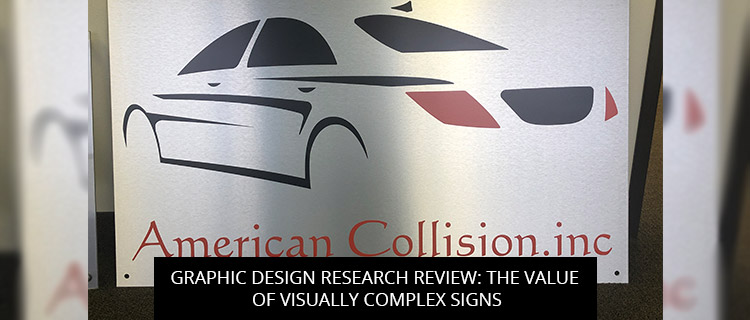Graphic Design Research Review: The Value Of Visually Complex Signs

When choosing the graphic design for your business signs, should you keep it simple or try to create something more complex?
In today’s post, our graphic design team reviews research by the Interdisciplinary Journal of Signage and Wayfinding and the Signage Foundation to answer this enduring advertising question.
Read on to learn more, or call (972)-428-3200 to speak directly with a graphic design expert in Carrollton, TX.
Graphic Design Research Review: The Value Of Visual Complexity
Time and time again, studies have shown that signs boost sales. For example, in a seminal report published by the Signage Foundation, researchers found that the addition of a single on-premise sign could boost revenue by as much as 15% (Signage Foundation, 2012).
But not all signs are created equal, and in order to get results like these, you’ll need to choose the right graphic design for the job.
Traditionally, many graphic designers favored the less is more philosophy, but new research by the Interdisciplinary Journal of Signage and Wayfinding is highlighting the value of visually complex designs in certain sales contexts.
During their review of existing literature, researchers Knuth et al. (2020) found that “increased feature complexity had mixed results on favorable evaluations.” When complex signs were posted in high-traffic areas, where readers were moving too fast to give signs more than a few seconds of attention, they performed poorly. But in retail settings, where customers had time to stop and soak up sign information, “increased design complexity had a more consistent correlation with longer gazes and more favorable attitudes towards the visual display” than their simpler counterparts.
Based on these preliminary findings, Knuth et al. (2020) hypothesized that complex graphic designs would be a predictor of increased likeliness to buy in retail settings, especially for products without sufficient information on their packaging.
To test their theory, the research team selected 15 signs from a chain of garden centers and separated them into three groups: low graphic design complexity, moderate graphic design complexity, and high graphic design complexity. Next, using eye-tracking technology, they monitored visitors’ visual attention and purchase behaviors.
Here’s what they found:
- Highly complex graphic designs garnered more visual attention, higher fixation count and longer total fixation duration than their simpler counterparts
- Highly complex graphic designs were rated as “more attractive” than simpler signs
- Highly complex graphic designs were positive predictors of customers’ likeliness to buy garden center products
- Highly complex graphic designs were especially effective for boosting sales of products without sufficient information on their packaging
In conclusion, although busy graphic designs aren’t typically recommended for roadside displays, they definitely have their place in any sign system. If your business draws a lot of in-store browsers or you sell products with austere packaging, complex graphic designs can help draw the eye, highlight product value proposition, and increase dwell time, all of which can boost your bottom line.
Boost Sales With Complex Graphic Designs: Get A Free Quote
To learn more about the sales-boosting power of visually complex graphic designs, and get a free quote on a mock-up, you can call (972)-428-3200 or fill out our online contact form.
References
Knuth, M., Behe, B. K., & Huddleston, P. T. (2020). Simple or complex? Consumer response to display signs. Interdisciplinary Journal of Signage and Wayfinding, 4(2), 7-22.
Signage Foundation. (2012). The Economic Value of On-Premise Signage.
Back
